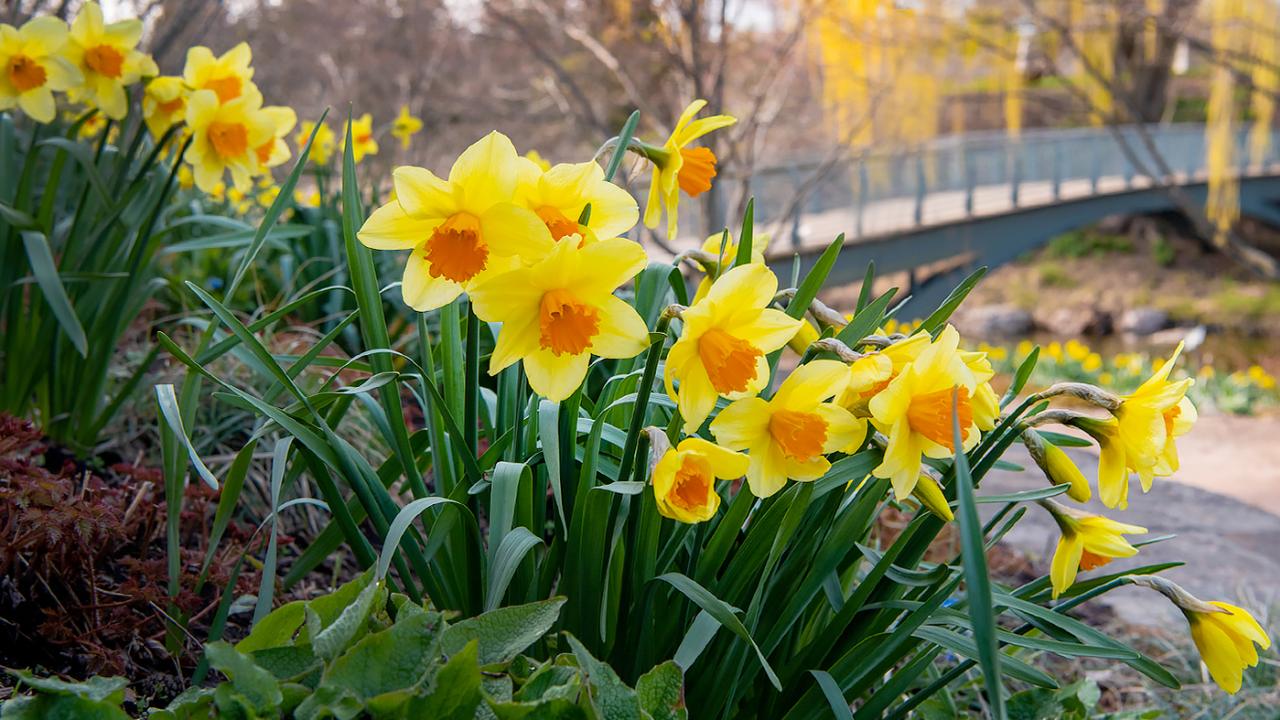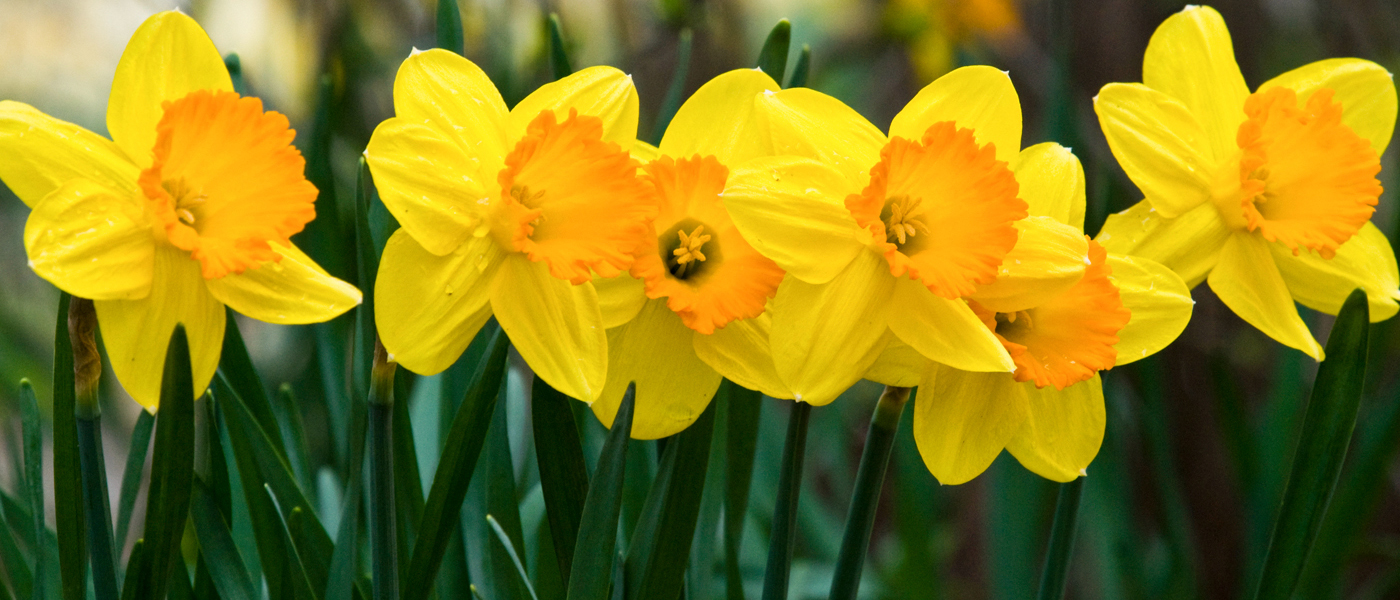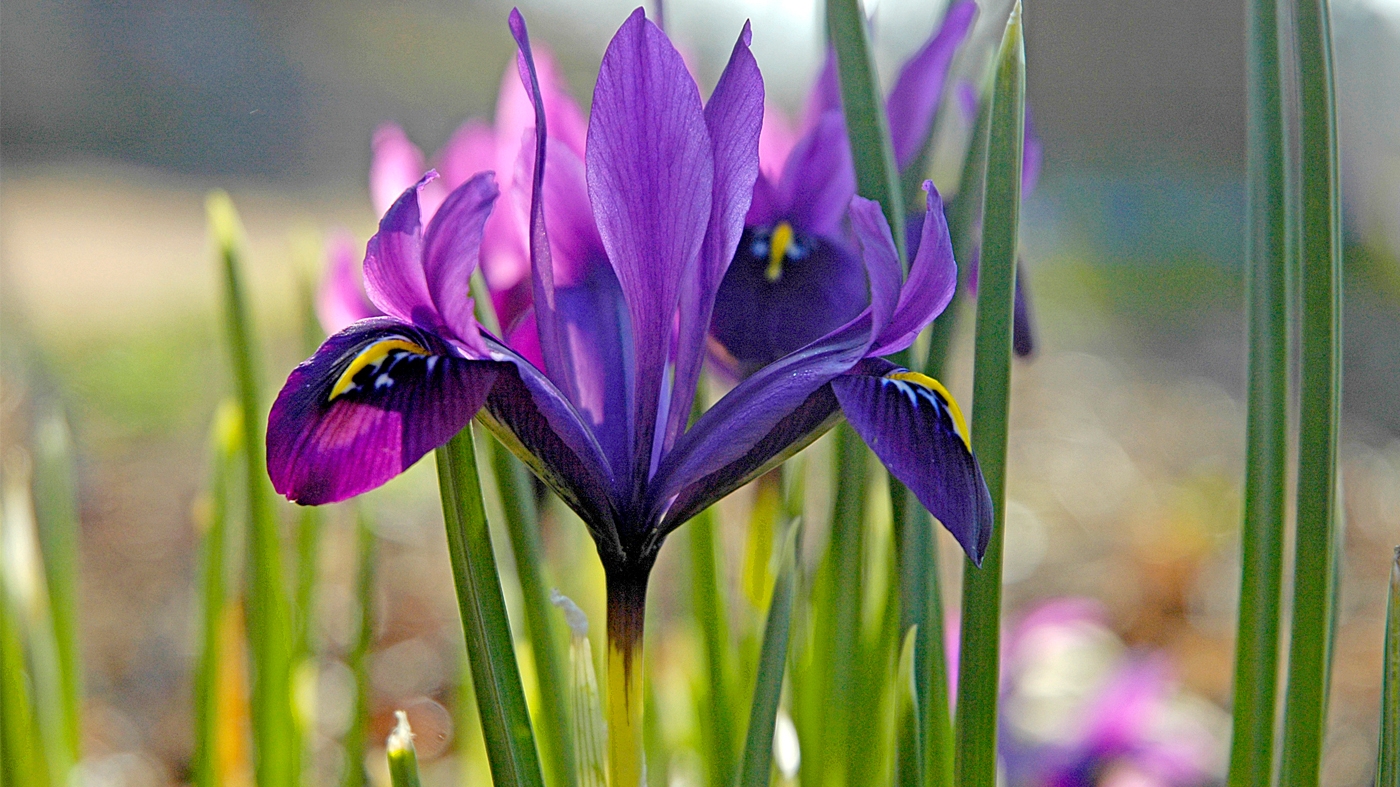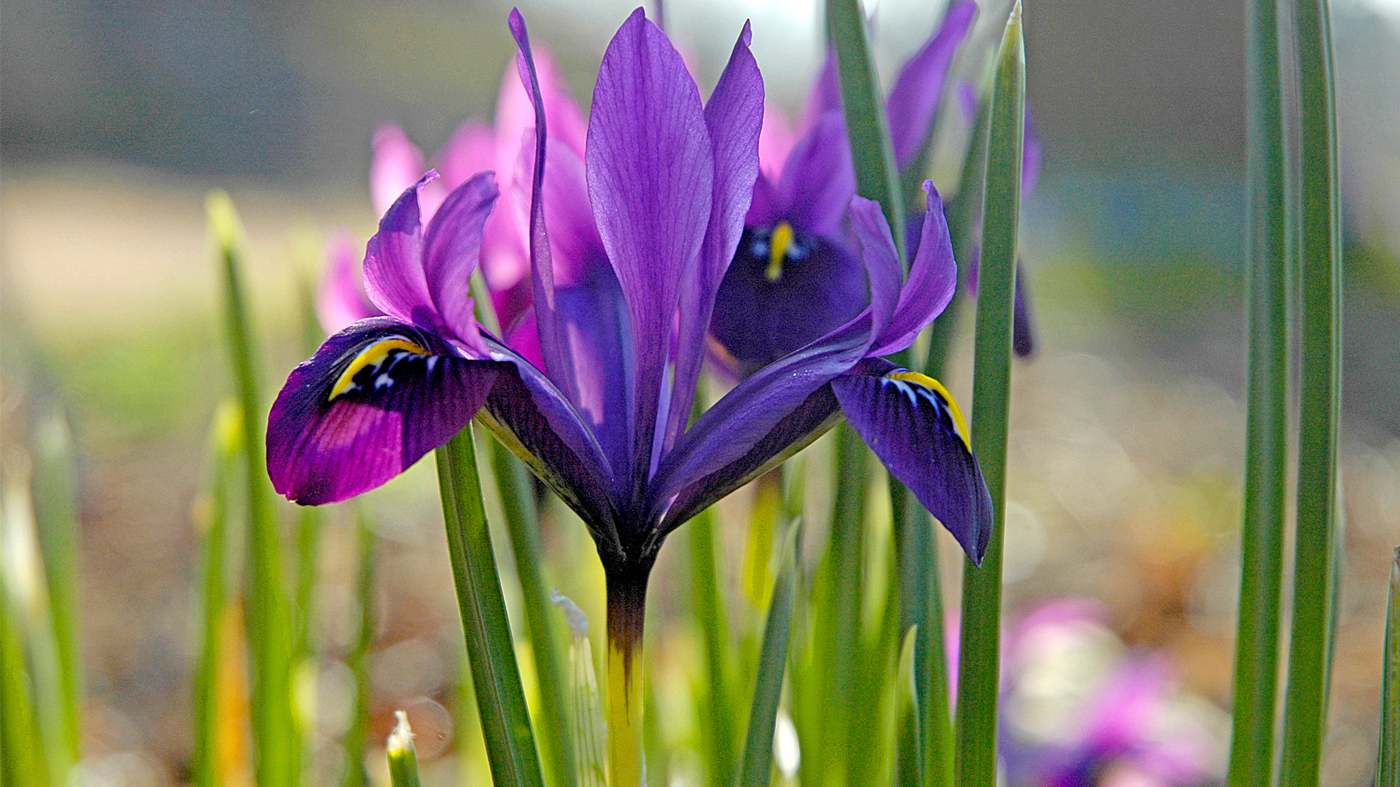

Plant Now, Applause Later
Now that both temperature and leaves are falling, a gardener's thoughts turn to planting bulbs.

In an April Smart Gardener, our headline read: "Plan Now, Plant Later."
Now is time to "plant later"—put your planning steps into practice as you commence planting the daffodil bulbs that have recently arrived on your doorstep.
When to plant daffodils
Daffodil bulbs, like most spring bulbs, prefer cooler soil, ideally below 55 degrees Fahrenheit. In general, that occurs about two to four weeks before the ground freezes.
TIP: If your daffodil bulbs arrive earlier than cool temperatures do, store them in a paper bag (not plastic—too much moisture retention) in a cool place until temps drop.
Where to plant daffodils
Check those photographs and plant markers that you documented last spring, and ask yourself two questions about potential daffodil sites:
- Is there enough light? Daffodils need at least six hours of full sun, as befits such open, sunny-faced flowers. While you can plant daffodils under trees (they don't leaf out until later in the season), beware of trees with heavy, extensive root systems, as there won't be enough soil for bulbs to grow and thrive.
- Speaking of soil, is the potential planting spot well drained? Daffodil bulbs—like any bulb—can rot in soil that's too wet.
Well-drained, sandy loam soil is perfect for bulbs. If you, like many Chicago-area gardeners, have heavy clay soil, dig 1 foot deeper than the regular planting depth and add sand and peat moss for better drainage. If you're lucky enough to have sandy soil, add compost and peat moss: bulbs need plenty of organic matter to thrive.
TIP: If you have an irrigation system in your yard, plant daffodils/bulbs out of reach of sprinklers—see second bullet above.
How to plant daffodils
Once the soil is prepped, consider bulb placement. At the Garden, we've found that both of these methods work:
- In bare areas, scatter bulbs over the soil surface randomly, then dig holes 6 to 8 inches deep (rule of thumb: two to three times the height of the bulb itself). Place bulb into the hole, pointed end up, and cover with soil.
- Dig all of the holes first (again, 6 to 8 inches deep), then position bulbs in groups of three or five into each hole (change it up with a few singles and groups of sevens, too). Cover with soil.
The goal is a natural look, whether daffodils emerge looking driftlike or as more "mature" clumps. Fight the urge to plant daffodils in straight, orderly lines—they simply look better naturalized.
TIP: Like little solar panels, daffodil leaves absorb sunlight after bloom, pulling energy down into the bulb for the next year's flower. Therefore, don't cut or braid the leaves, even when they turn brown: disguise them with bright spring annuals, instead.
Fertilizing, watering, and mulching
Before watering, sprinkle granular, slow-release bulb fertilizer over the planted holes.
- Don't put fertilizer directly into the holes themselves; the point is for it to percolate slowly down toward the bulb. Plan to fertilize again when the leaves appear in spring, and a third time after flowers fade and die back (a triple-fertilizer strategy that will keep bulbs healthy for many years).
- Next, water the newly planted areas to settle the soil and eliminate any air pockets.
- Finally, cover with 2 inches of leaf mulch as a blanket for cold weather.
TIP: New bulbs usually emerge about two weeks later than normal in their first spring.
Now, back to this month's headline
sit back and enjoy the applause next spring!
Karen Zaworski was a garden writer and photographer.

